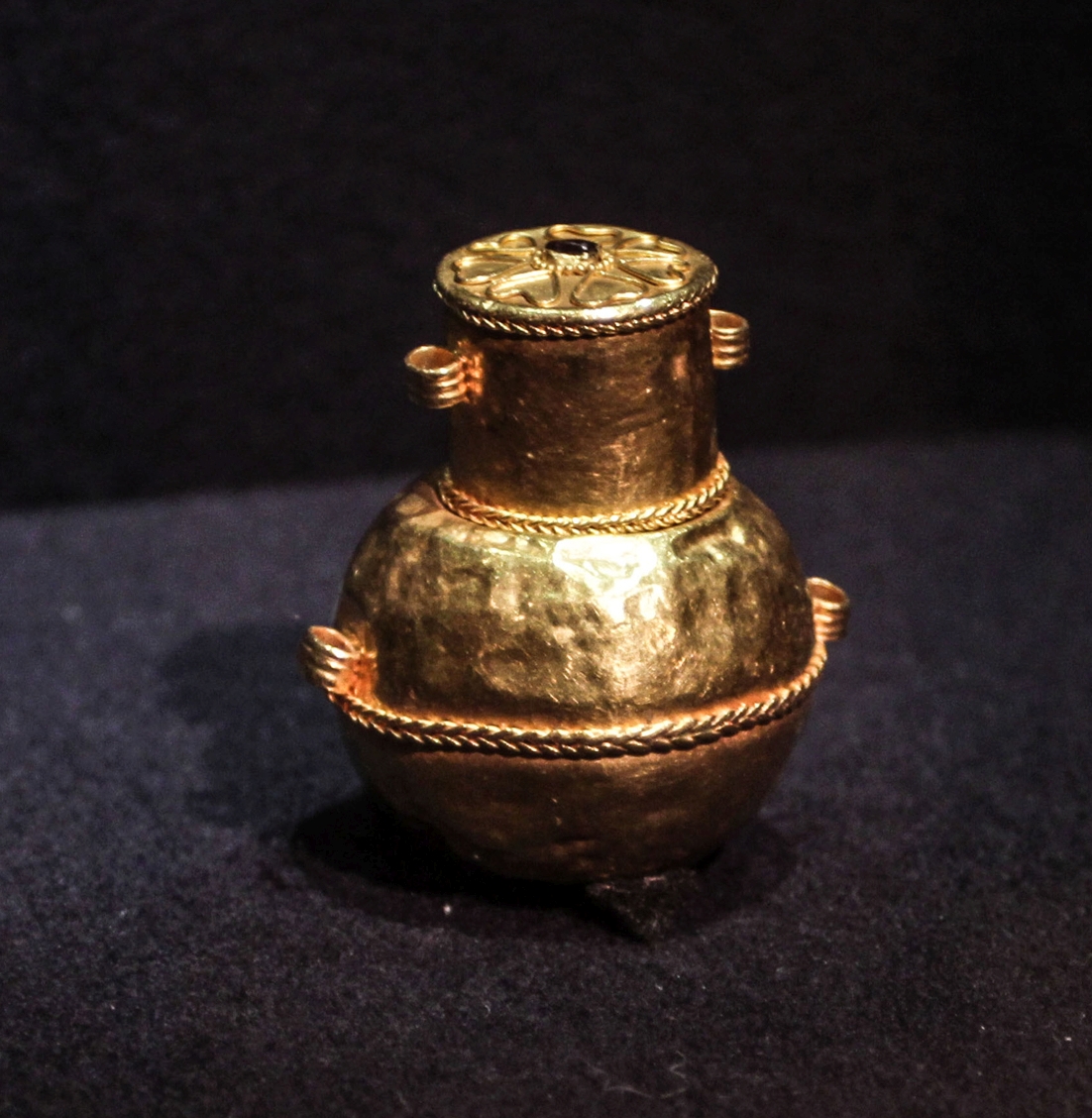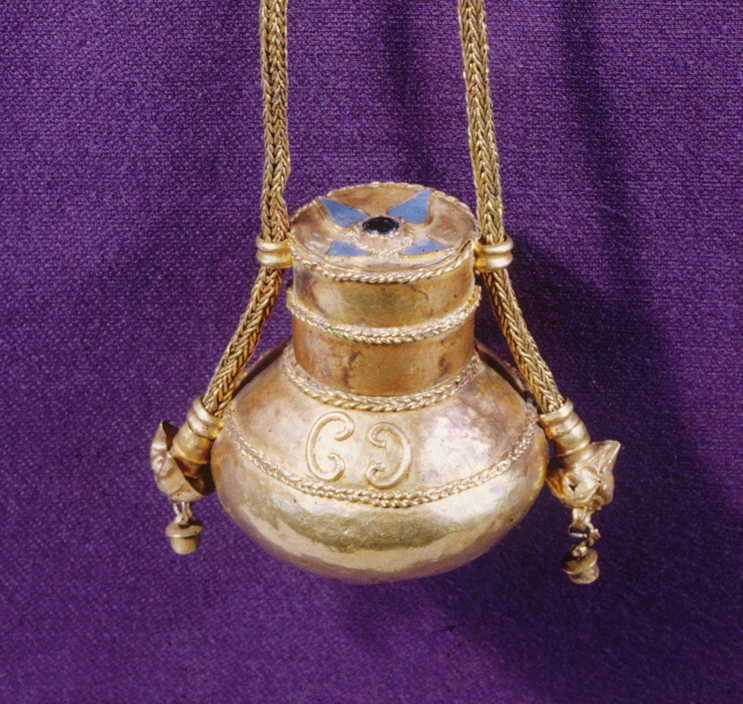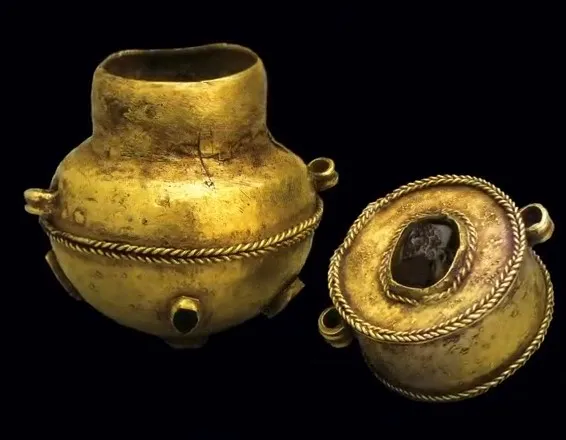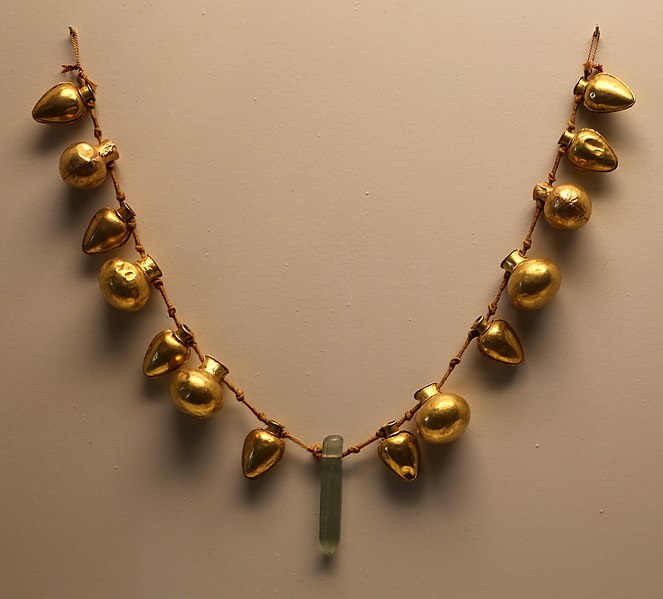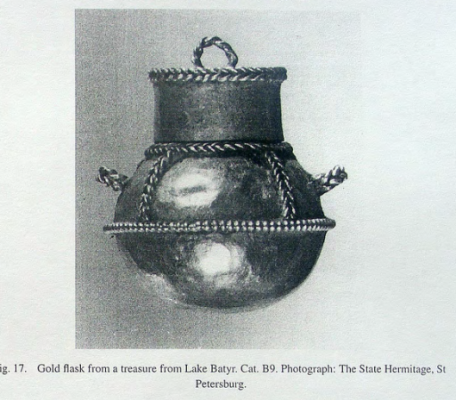
M. Treister, Gold Vessels, Perfume Flasks and Pyxides from Sarmatia
Ht. 3.4 cm; max. dm. 2.8 cm. Weight 14.0 g.
The State Hermitage. inv. 1928/1
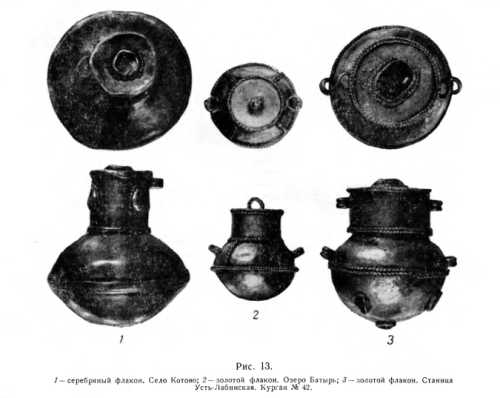
The gold bottle was part of the find discovered in a cave of a high mountain on the shore of Lake Batyr, Kazakhstan (Fig. 13, 2). [на восточном берегу озера Батырь]
“This find included: a miniature gold bottle, rock crystal in a gold frame, a pair of gold earrings, small gold plaques sewn onto fabric, a gold mug, pearls, a leather box and, two (…) most likely chalcedony beads.”
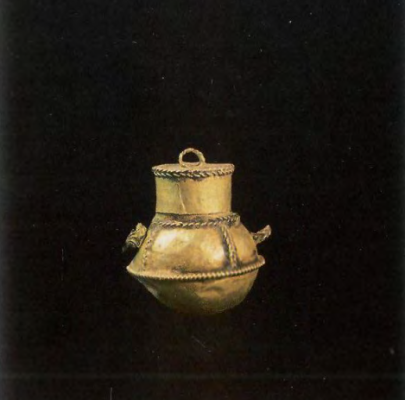
К.М. Скалон [K. M. Skalon]. О культурных связях восточного Прикаспия в позднесарматское время. — 114-140, Археологический сборник Государственного Эрмитажа (АСГЭ). Выпуск 02, 1961
“The fourth item from the published complex [from a Batyr lake area] is a miniature golden bottle, round in shape with a cylindrical neck and a cylindrical cap placed on it (see Fig. 13.2). Apparently, it was forged from a single thin sheet of gold, since there is no seam anywhere on the body. But it is possible that the bottle is also made of two halves, and the seam between them is covered with a horizontal chased belt in the middle of the body, imitating grain. The cylindrical cap of the bottle is bent from a narrow thin plate with soldered edges, onto which a round plate is soldered on top. The other two ornamental belts – around the throat and on the lid – are filigree; each of them is formed by two rows of double twisted wire, giving the impression of a “pigtail”. The same technique is used to make the eyelet on the lid and two ears on the sides of the body, as well as four vertical stripes connecting the belts on the body. There are dark red spots in places on the inside of the lid and on the surface of the vessel. There was some kind of dark mass preserved inside the bottle.”
“It undoubtedly belongs to a series of similar products, being in its shape and ornamentation closest to the Ust-Labino bottle. It differs from the latter only in the presence of one loop on the lid. This feature brings it closer to later bottles. Therefore, most likely, the Batyr bottle is somewhat younger than the Ust-Labinskaya one [Kuban region] and dates back no earlier than the 3rd century CE.
From all that has been said above, it follows that the Batyr specimen was brought from more western regions, most likely from the Bosporus. This, as well as a comparative analysis of the other items of the Batyr complex discussed above, confirms the presence of cultural ties between the eastern Caspian region and the Northern Black Sea region and the Caucasus during the first centuries of our era.
In four bottles (from Lake Batyr, from the village of Ust-Labinskaya, from the village of Kotovo and in a copy from the Botkin collection), the remains of their filling were preserved in the form of a dark brown mass.
V.N. Kononov carried out a preliminary study of this mass, which showed that the contents of all bottles are the same. It consisted of crushed parts of plants and was either an aromatic substance, or a medicine or poison. Further research may make it possible to determine what type of plant these remains belonged to, which will make it possible to clarify the purpose of the contents.” [K. M. Skalon]
В 1916 г. в пещере у оз. Батыр Мангышлакского уезда обнаружены кувшин из орехового дерева, каменные грузила, пара серег со вставками из камней, золотой флакончик, штампованная пластина, золотая кружка и кожаная коробочка.
str 58
https://www.archeo.ru/struktura-1/izdaniya-1/vagnejshije-izdanija/pdf/Dluzhnevskaja_2011.pdf
О находке клада в 1915 году в пещере впадины Карагие, на восточном берегу озера Батыр
https://www.lada.kz/aktau_news/society/86127-zoloto-mangistau-arheolog-rasskazal-o-nahodke-v-peschere-vpadiny-karagie.html



